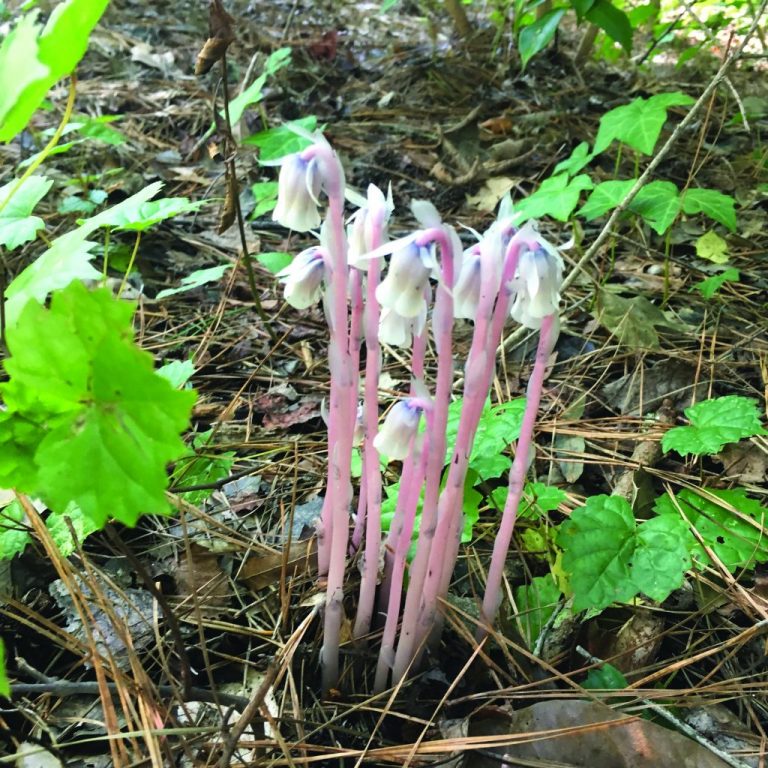In late September, I saw several photos on Facebook of an unusual plant called Indian pipe, also known as ghost plant or ghost pipe (Monotropa uniflora). From midsummer to fall each year, I find several clumps of Indian pipe growing along the borders of our woods, so I went exploring the next day and discovered six clusters of pale, waxy-appearing plants at various stages of development. All were nestled at the bases of beech or pine trees.
Many people refer to Indian pipe as a fungus, but it is an herbaceous perennial that doesn’t produce chlorophyll. Chlorophyll is the green pigment in plants that absorbs the sun’s energy, allowing water and carbon dioxide to be converted into carbohydrates for nutrition. Chlorophyll also gives plants their green color, but because Indian pipe doesn’t contain chlorophyll, it appears pale and translucent in the dark shade of the woods.
Monotropa uniflora is found from coast to coast and from Florida to Alaska, with the exception of the Rocky Mountain ...
To view the rest of this article, you must log in. If you do not have an account with us, please subscribe here.

